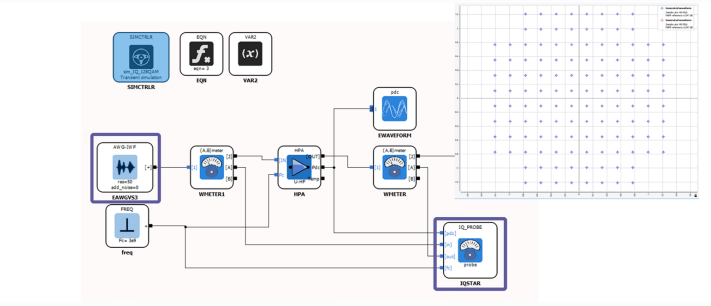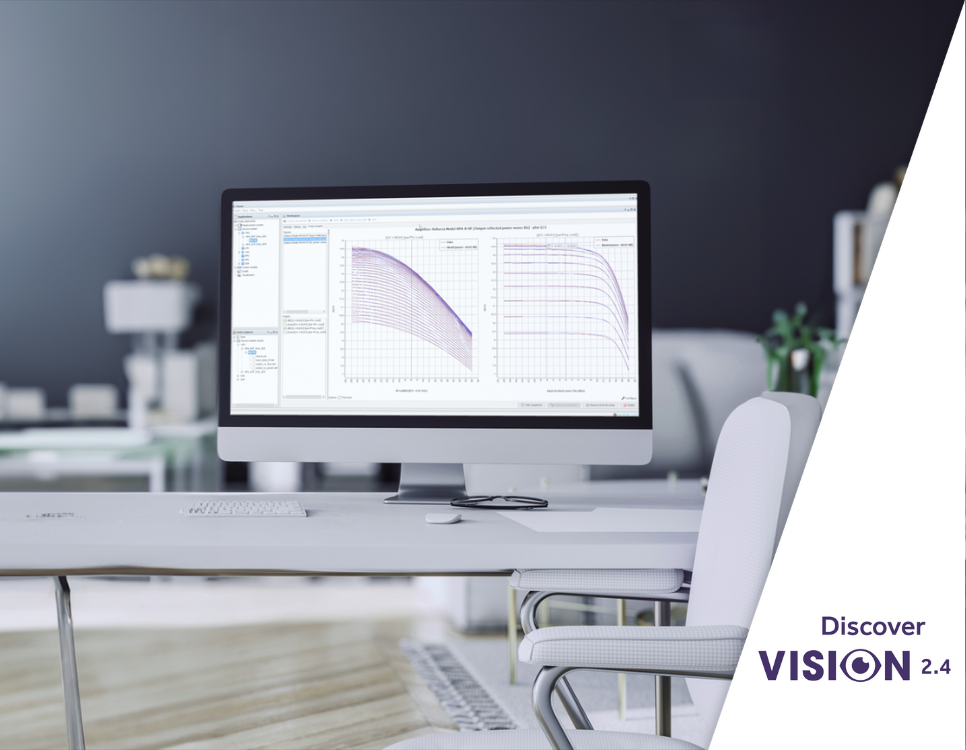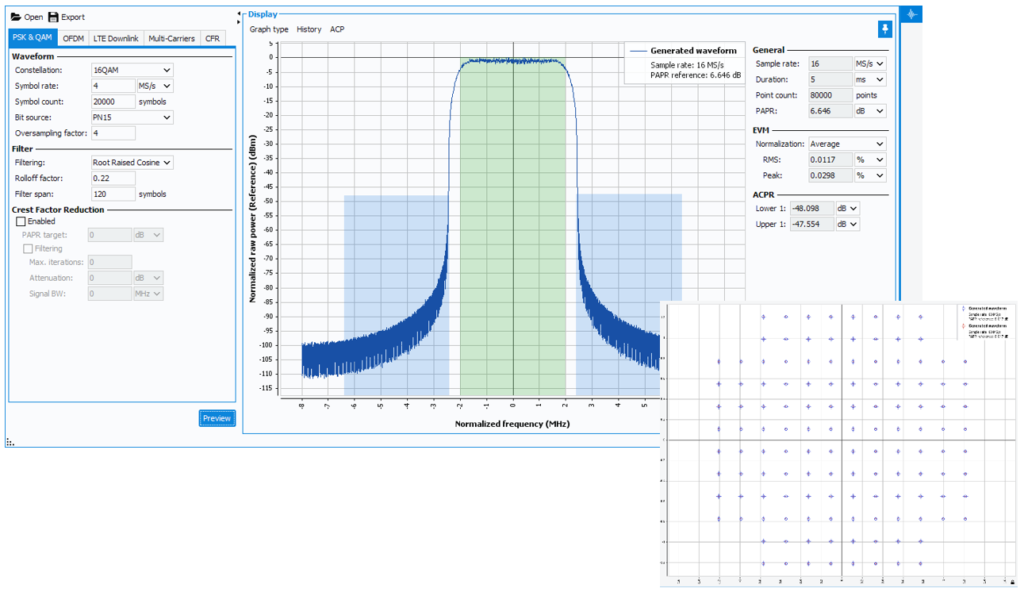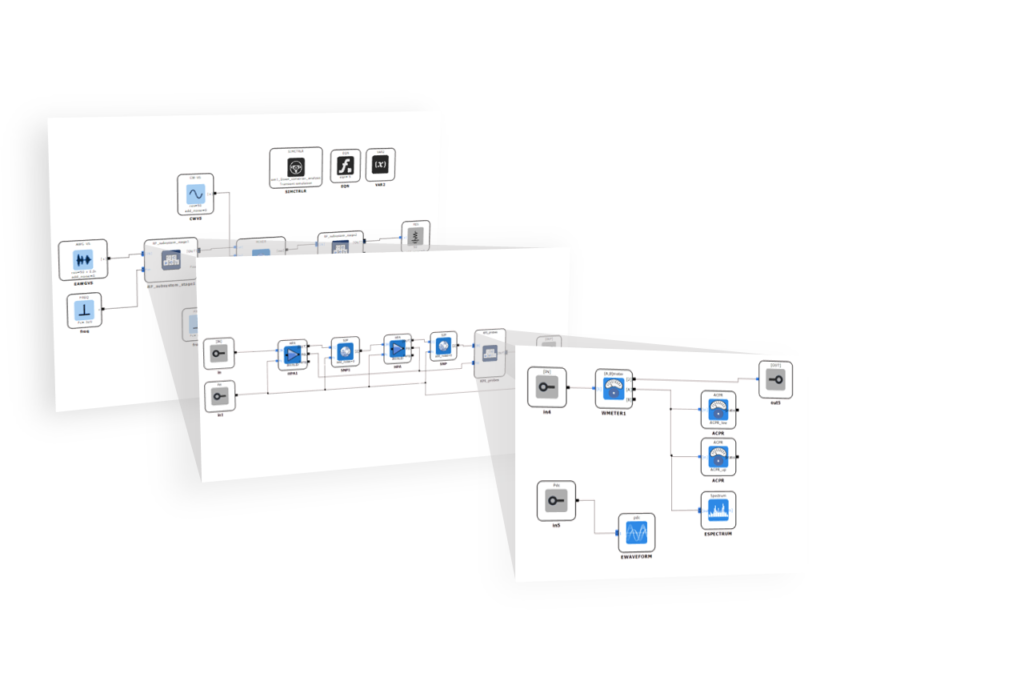AMCAD Engineering has announced the release of version 2.4 of VISION, the most advanced behavioral modeling software for system design.
This major release includes new modules and features to address the industry’s additional Modeling and simulation requirements. It also showcases enhancements of the capabilities of the existing modules to increase user experience satisfaction.
The growing popularity of VISION brings its share of customer requests to include new software capabilities, allowing them to model circuits with more accuracy to speed up the design process and predict the behavior of systems before the prototyping stage.
VISION 2.4 Main New Features and Software options
- Waveform Generator & IQSTAR probe feature
With the increasing demand for a Linux based version, the development team reached a new milestone by releasing the first Linux version of VISION. It was long overdue but now it is done!
The Waveform Generator module included in the System Architect Module (VIS100E) takes advantage of cross plateform software compatibility. This new module allows the evaluation in simulation of key performances of modern telecommunication systems such as EVM and BER. The new VISION release shares similar plug-ins as the IQSTAR Software for circuit characterization. Indeed, the waveform generator can run on both platform allowing a simple generation of academic signals like PSK and QAM. These signal files can be imported or exported between the measurement and simulation plateforms to ensure a good quality of the model validation.
The diagram editor provides signal source block to import iwf file generated from Waveform Generator application and IQSTAR probe for demodulation and analysis. Simulation results are formatted in such a way that they can be easily compared with IQ validation measurements made with IQSTAR software.

- Multiblock Feature
When dealing with block diagrams that are expanding in both size and complexity, an effective approach is to structure them into more manageable units referred to as Multiblocks. A Multiblock serves as a block within a diagram that encapsulates a specific subset of blocks. Within a single diagram, multiple Multiblocks can be incorporated, and there’s the option to nest Multiblocks within each other to achieve additional organizational depth.
Leveraging Multiblocks in the management of block diagrams provides notable advantages, including:
- Hierarchical Organization: Blocks are arranged in layered structures, facilitating deeper navigation.
- Functional Grouping: Functionally related blocks are grouped together, enhancing coherence and understandability.
- Diagram Simplification: The display of the diagram is streamlined by minimizing the number of visible blocks in the main window.
- Defined Interfaces: Clear interfaces with specific inputs and outputs are established, improving integration and interaction within the block diagram.
VISION 2.4 Main Improvements and bug fixes
Multiple enhancements were added to the latest release to enhance the user experiences, many improvements and bug fixes were released. Here are a few of them:
- The vision runtime has been removed in order to avoid redundancy with the cosimulation toolbox.
- Vision now runing on Java 17.
- Fixed an issue where the data explorer panel used an excessive amount of memory causing the application to crash.
- Refactoring of data levels and variables in Vision simulation curves.
- Refactoring following AMCAD API modifications of file managements for cross platform compatibility.
- Fixed sample rate inversion during demodulation computing.
- Error message added when sNp file is missing in antenna far field data directory.
- New version of 3-Tones measurement file.
We thank our increasing number of customers worldwide for their feedback, allowing us to improve VISION at every release. A more detailed list of all the new modules, features, enhancements, drivers, and bug fixes is available in the product manual of VISION available with the software installer



